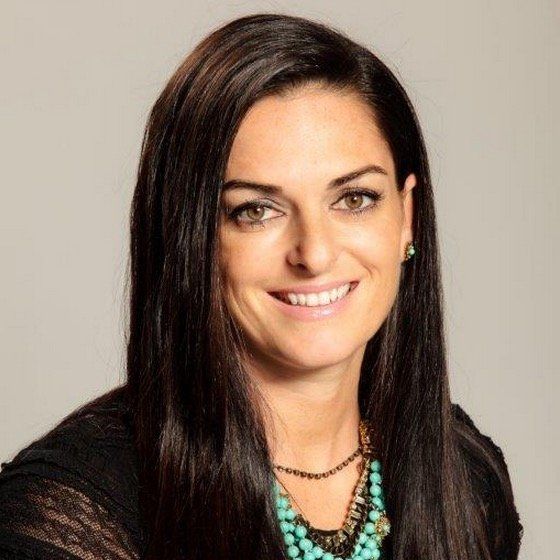Mortgage Articles

Negative equity occurs when your property is worth less than the outstanding balance on your mortgage. It’s not a very good place to be, especially if you’re planning for your retirement. Another term you might have heard is “being underwater” in your mortgage.
The reality is, most Canadians have a significant amount of equity built up in their homes and this equity can be used to help plan through retirement.
Dealing with a negative equity position is very uncommon, one of the only times the idea of negative equity even comes up is when discussing a reverse mortgage. Usually, the question is asked something like this:
“If my home has depreciated in value at the time it is sold, and the mortgage balance is growing, will I (or my heirs) end up owing more than the house is worth?”
And in the case of a reverse mortgage through the Home Equity Bank, the answer is no. No, assuming you meet all your mortgage obligations, the amount you will pay on your due date will never exceed the fair market value of your home. This is what they call their No Negative Equity Guarantee.
As a reverse mortgage doesn’t have any payments required throughout the life of the mortgage, naturally, the outstanding balance grows with time. But as the Home Equity Bank has more restrictive initial qualifying guidelines than a standard mortgage, even though the balance is growing, it rarely grows beyond the value of the home. And if it does, Home Equity Bank covers the difference.
Compare that with a standard mortgage, where if you wanted to access your home equity, you can potentially refinance up to 80% of the property value, or in the case you're downsizing, you can buy a new property with as little as 5% down. In this case, when the question is asked “is it possible to end up owing more than my property is worth” with a standard mortgage, the answer is yes. If the market takes a turn, you could find yourself in a negative equity position.
Understanding your mortgage options through retirement is crucial to making the best choice for you. Each person’s financial situation is different and there is no one size fits all advice that can be provided on a blog.
As a Lifestyle Mortgage expert, I specialize in helping older Canadians to understand their options, and provide counsel to help them make the best choice. If you have any questions at all, and would like to discuss your financial situation with me, please contact me directly anytime.

For older Canadians – living on a set income can be difficult. To make matters worse, unexpected medical events and many other financial matters arise that can make a tight financial situation even worse. As a result, a growing number of seniors in Canada turn to the equity in their home as a source of financial relief.
What Is Home Equity?
Home equity can be defined as the actual value of your property. Simply put, home equity is the difference between what you owe on your home and your homes fair market value. For instance, if your home has a market value of $300,000 and you only owe $50,000, you have $250,000 of equity in your home.
One of the biggest advantages of home ownership is the opportunity to build equity. Even though you may not be able to sell your equity, home equity loan options allow you to access the equity in your home to take care of any of your needs, expenses, or to simply live a higher quality of life. Generally, there are three different types of home equity loan options for seniors: a home equity line of credit, a second mortgage, and a reverse mortgage. The following information explains each of these three options in detail.
What Is a Home Equity Loan?
A home equity loan is a type of loan in which the borrower uses the equity of his or her home as collateral. Home equity loans are often used to finance major expenses such as home repairs, medical bills, a new car, university tuition for child, or other contingencies faced by homeowners. Home equity loans can be used only as re-finance options and not as collateral to purchase a new property.
What Is a Second Mortgage?
Home equity in Canada can be used as collateral for a second mortgage on your home. The bank issues you a cheque in a lump sum based on the available equity in your home for you to spend as you like. A second mortgage typically has a set amount of time you have to repay the loan (term) as well as fixed interest rate. After you have received the proceeds from your loan, you need to make monthly payments on the second mortgage until its paid in its entirety.
What is a Home Equity Line of Credit (HELOC)?
A home equity line of credit (HELOC) is similar to a second mortgage. However, the issuing financial institution doesn’t release all of the funds in one lump sum. The money can be accessed as you need to or when you choose to for whatever reason. For example, if you have $200,000 of available equity and have a HELOC for $125,000, you can access these funds using similar features as you would for a chequing account. You will only be responsible for paying interest on the amount of equity you actually use.
A few typical characteristics of HELOCs are:
Fluctuating interest rates
In many cases, lenders offer a special low “introductory rate.” However, this rate will commonly increase after a month or two. While HELOCs may seem to be the best way to access the equity in your home, the fluctuating interest rates can cause your payments to drastically increase.
Advance periods
The majority of HELOCs have what is known as an advance period, which is a set period of time you are allowed to access the money in the HELOC. This period can be five years, ten years, etc. After the advance period is over, you are not able to withdraw any additional money. More importantly, following the advance period is the repayment period, which is the time you are supposed to repay any borrowed monies.
Reverse Mortgage Home Equity Loans
If you are a homeowner in Canada and are 55 years of age or older, you may qualify for a reverse mortgage. A reverse mortgage is designed for you to convert the equity in your home into cash to help pay for increased living expenses, health care costs, a home renovation, a vacation, or anything else you need. While traditional mortgages require you to pay monthly payments, a reverse mortgage does not require monthly payments. With a reverse mortgage the bank makes monthly payments or a lump-sum payment to you based on a percentage of the value and equity of your home, your age, amount of secured debt, property type, and property location . You continue to live in your home and must meet certain requirements. Reverse mortgages are designed to offer you another stream of income so you can spend your golden years living comfortably. After you are deceased, move, or sell, the loan will be reconciled with the value of the property.
Key Differences in Home Equity Loan Options
Disbursing funds
- Reverse mortgages offer an enhanced level of flexibility. You can receive monthly payments or you can choose to receive a large lump sum payment.
- Home equity lines of credit allows you to access the funds through a credit card and/or a checkbook. However, it’s important to understand you will only be able to access this credit line during a set advance period. After the period has expired, you will be expected to begin repaying the balance.
- Second Mortgages in Canada disburse the proceeds in one lump sum payment.
Repayment
- Reverse mortgages offer the premier and most formidable solution for seniors in Canada with deferred repayment. This means your loan will only become due if you become delinquent on your insurance and/or property taxes, you move, if the home falls into disrepair, you sell the home, or you pass away. In most cases, a reverse mortgage is repaid from the sale of the home after the death of the homeowners. This allows the seniors to live comfortably, vacation, and enjoy time with their family while they are alive without amassing a significant amount of secured debt.
- HELOCs have a repayment function based on the amount that was borrowed as well as the current interest rate. Considering interest rates change, your monthly payment could be affordable one day and unaffordable the next. This repayment option is the least favorable for individuals who are on a set income. It may become a challenge for seniors to service the debt, especially if they are looking for home equity loan options to supplement reductions in income during retirement. Seniors may find it difficult to qualify for a HELOC as there are income requirements. They may stand to lose the property to repay the loan, if the lending institution decides to recall the loan.
- Second Mortgages set monthly payments based on a fixed interest rate, which is more favorable than the HELOCs’ fluctuating payments, but less favorable than the terms of a reverse mortgage.
Second mortgages, reverse mortgages, and HELOCs all enable you to get cash out of your available equity. While they have this in common, they differ in terms of disbursement, repayment, and several other areas. If you are over the age of 55 and are interested in a source of long-term income, reverse mortgages are the premier solution.
Reverse mortgages are designed to allow you to truly enjoy your golden years in your home. With the proceeds from reverse mortgages, you can pay off debts, renovate your home, cover health care costs, help family members, take a vacation, and live comfortably. These types of home equity loans offer you another stream of income, so you can enjoy the rest of your life.
This article is the property of HomEquity Bank and has been published with permission.

Understanding home equity can be a difficult proposition if you’ve never engaged the issues before—even if you have some passing familiarity with other aspects of finance, real estate and the associated values can seem like an entirely new language.
Understanding Home Equity: What is a home equity loan?
A home equity loan is a type of loan where you utilize the equity of your home—the difference between fair market value and the outstanding balance of all liens on the property—as collateral for a loan. This creates an additional lien against the property and can be used to fund whatever you need.
Understanding Home Equity: How do I get a home equity loan?
Typically speaking, home equity loans require good to excellent credit, as well as a reasonable loan-to-value and combined loan-to-value ratios, i.e. it needs to be a safe bet for the lender. If you meet those standards, you’ll want to approach a lender, such as your bank, and choose from the terms they provide. Specifics will vary greatly depending on the size of the loan, your repayment goals, and of course the values inherent in your home.
Understanding Home Equity: Home Equity Loan Myths.
Home equity is a subject rife with misunderstandings and myths. Here are few to be aware of:
- Pre-approval is a guarantee:
This isn’t at all true—pre-approval only means that you have a lender’s interest. They may still renegotiate or back out of offering you a loan when they get a better look at your situation.
- I need to spend the money on the house:
This is a common use of home equity loans, but not a rule—you can use the loan to pay for a new car, or college, or anything. It’s a lump sum loan against your equity, to spend as you prefer.
- If I default, I won't really lose my house:
There are some situations where default on your home equity loan won’t lose your house, but they’re few and far between. A home equity loan is a huge risk, if you’re not going to be 100% comfortable making payments—if they were easy to slip out of, banks wouldn’t offer them.
Understanding Home Equity: What about a HELOC?
A HELOC, or Home Equity Line of Credit, is an alternative to the lump-sum payment typically offered by a home equity loan. Instead of fixed terms and a fixed lump sum, you receive a line of credit pegged to a variable interest rate. This offers advantages and disadvantages to the borrower; you can borrow what you need when you need it, but the rates will often be less advantageous to you than you would experience with a traditional lump-sum loan.
HELOCs often offer advantages for savvy tax planning and are viewed more favorably than a second mortgage by anyone considering debt, as well. Outside of these notable differences, however, a HELOC offers many of the same limitations, risks, and benefits of a traditional home equity loan—a failure to repay will lead to foreclosure and the loss of your home.
If a home equity loan doesn’t sound quite right to you at this point, read on–there are many other ways to tap the value of your home. The current rising star of home finance is the reverse mortgage—the home equity loans close cousin.
Understanding Home Equity: What is a Reverse Mortgage?
Reverse mortgage loans are a special form of loan, typically only available to seniors, which allows people to access the equity of their home without selling. Essentially, a reverse mortgage is a home equity loan with the interest and principal deferred so long as you occupy the premises. If you move out or pass away, the loan comes due and debt collection begins. This makes a reverse mortgage an excellent source of funds if you’re planning to stay in your current home indefinitely, and aren’t worried about passing the home on free and clear to an heir.
Understanding Home Equity: How do I get a reverse mortgage?
Depending on the nation, the rules for reverse mortgages may be different. In Canada, for example, they’re restricted to homeowners over the age of 55. Unlike a typical home equity loan, however, your credit standing and income won’t matter. Once you meet the age requirement established by your country, you must approach an approved provider of reverse mortgages and submit an application. You’ll need to determine how you wish to receive the money, as reverse mortgage loans offer a high degree of flexibility; you could receive a lump sum, regular payments to supplement income, an open line of credit attached from which you can charge a card or write checks, etc. This will all need to be worked out with the loan provider, as will an assessment of your equity.
Understanding Home Equity: Reverse Mortgage Myths.
As they’re less well-known than other financial services, reverse mortgages are the source of countless myths and misapprehensions. Here are a few to be aware of and move past:
- A surviving spouse will lose the home or have to begin payments.
If your surviving spouse signs with you, then the loan will continue to be deferred until they pass or sell the home.
- I have to sign my house over to the lender.
When you borrow with a reverse mortgage, you retain full and complete ownership of your house.
- Reverse mortgages are costly.
The same regulations covering other lending practices protect homeowners against excessive fees for reverse mortgages, keeping them fair and reasonable.
- You can’t reverse-mortgage a home with an existing lien on it.
You’re borrowing against your equity, meaning you can borrow even if your home still has a lien on it—in fact, you can use a reverse-mortgage to clear other liens, if you like.
- The lender can force me to move out and repay the loan.
Again, you maintain full ownership of your home under a reverse mortgage—the lender cannot compel you to move or force your hand in any way.
- Heirs can end up paying more than the house is worth.
Even if you end up receiving more than the value of your home under a particular plan, the debt accrued can never exceed the value of your home—so your heirs will NEVER have to pay more than your home is worth.
Final Thoughts
Ultimately, the best way to access the equity of your home today will depend upon your income, age, aims, and credit. Many find a traditional equity loan ideal for their purposes—others find the deferred debt of a reverse mortgage far more useful and palatable. Regardless, incurring any debt, even one you don’t expect to come due until after you pass, deserves careful consideration and deliberation. Choose wisely, and make the most of your home’s hidden value.
This article is the property of HomEquity Bank and has been published with permission.

Living well in retirement isn’t as easy as most people envision when they’re in their youth. Utilities, medical payments, prescriptions, insurance and just day-to-day living expenses often increase more rapidly than pensions, dividends and interest income. Even when you own your home, making ends meet at the end of the month can be a challenge for seniors. That’s where a reverse mortgage can help many Canadian seniors aged 55 and older.
How does a reverse mortgage work?
How can I qualify for a reverse mortgage?
What is a reverse mortgage?
These are just some of the questions that can arise while considering a reverse mortgage. A reverse mortgage is a financial product that allows Canadian seniors (age 55 and older) to tap into the equity that they’ve accumulated in their home. For many people, that equity is their largest single asset. Homeowners can access only up to 55 percent of their home equity as reverse mortgage, as long as they remain in that home. The exact amount a homeowner will receive depends on the property type, location, the home’s value, and the age of the applicant(s).
To qualify for a reverse mortgage in Canada, homeowners must use the residence as their primary home, maintain the property is good standing, stay up to date with insurance, continue to pay property tax and pay off any outstanding debts secured with the home with the proceeds from the CHIP Reverse Mortgage. Unlike other mortgages and loans, there is no health check or minimum income required with a reverse mortgage.
You will never be forced to sell or move as a result of changing home values or earning. The amount that you or your estate eventually has to repay will never exceed the fair market value of your home at the time it is sold. There’s no reason your home should ever be a burden to you or your family. The loan will be recalled only if the last homeowner passes away or moves out of the home.
Using Reverse Mortgage Funds Wisely
There are almost no conditions on how you use the proceeds of a reverse mortgage loan and homeowners are not required to make payment towards the interest or principal of the loan. This is often not the case with other types of loans or mortgages such as a Home Equity Line of Credit, or HELOC, that requires regular payments. Just a few of the smart ways how Canadian seniors can use reverse mortgage funds include:
- Make improvements to your home.
Keeping up with your home’s maintenance is essential to having a safe and secure living environment. If you’ve had to put off things like replacing your roof or replacing your heating system, the funds from your reverse mortgage loans can help make these essential updates possible. Canadian seniors can also use their loan proceeds for other upgrades, such as adding a deck, replacing countertops and/or remodeling the kitchen.
- Pay down debt.
High interest rates from credit cards can make it tough to ever get fully out of debt. You can get rid of some of your monthly bills by using your reverse mortgage funds to pay off those high credit card balances.
- Pay off medical bills.
If a recent illness has wiped out your savings and left you with a pile of bills, a reverse mortgage can give you the funds to pay off all of those bills and allow you to sleep better at night.
- Pay for leisure activities.
You can use your reverse mortgage to engage in leisure activities in retirement or enhance your lifestyle. This could include travel to various destinations – local or abroad or indulge in favorite hobbies, which may require monetary investment.
If you choose to take out a reverse mortgage loan, you keep the deed to the property. You only have to give up ownership of the house if/when you move out or sell the property. You can stay as long as you stay current on your taxes, maintenance and insurance. There’s no maximum length of time that you can live there.
Advantages Of A Reverse Mortgage Loan
A reverse mortgage loan offers a number of advantages to Canadian seniors. First, the funds you receive are completely tax-free. In addition, you can use the money any way you choose; pay off bills, remodel the house, or take a much needed vacation. Lastly, there are no payments required!
Applying For A Reverse Mortgage Loan
Canadian seniors can apply for a reverse mortgage loan from HomEquity Bank, the only provider of the CHIP Reverse Mortgage.
In order to qualify…
- You (and your spouse) must be 55 or older
- You must use the property as your primary residence
- The balance of any existing mortgage or lien against the property must be paid off by the proceeds from the reverse mortgage (or by other funds before the reverse mortgage is taken)
- Your home is in a location and of a type that HomEquity Bank typically lends on
CHIP Reverse Mortgages
Reverse mortgages for Canadian seniors are a little different from reverse mortgage products sold in the United States. All reverse mortgages in Canada are provided by HomEquity Bank, a Canadian Schedule 1 bank. The CHIP Reverse Mortgage has been assisting seniors for more than 25 years. Homeowners can get the proceeds from a reverse mortgage loan in a lump sum or in periodic advances. A reverse mortgage can be one of the choices for Canadian seniors looking for a way to supplement their monthly income. This financial product can help you get rid of debt, make necessary improvements to your home, or assist with day-to-day expenses.
This article is the property of HomEquity Bank and has been published with permission.

As the value of a property grows, the equity increases as well and can be an excellent source of income. Canadians homeowners age 55 or older can take advantage of HomEquity Bank’s CHIP Reverse Mortgage to access up to 55% of the equity in their home.
Home equity is the real value of your property. In other words, it’s the difference between the market value of the home and the remaining balance that is owed on a conventional mortgage. For example, if your home is worth $200,000 in the market, and you owe $50,000 on your mortgage, your equity is $150,000.
The opportunity to utilize the increase in the value of your property is one of the biggest advantages of owning a home. Although the equity in your home cannot be sold, it can be used as security for a reverse mortgage. Senior homeowners in Canada can benefit from the equity in their home by getting safe and secure access through the CHIP Reverse Mortgage. The exact amount available will depend on the age of the homeowner and his/her spouse, the type of home, its location and its current market value, and any secured debts.
Put your home equity to work with a reverse mortgage
With a reverse mortgage, you can choose to take a lump sum of money or to receive funds over time. As long as the property is well maintained, and property taxes and property insurance is paid, the homeowners will continue to own their home and HomEquity Bank will never take possession.
No regular payments are required; the loan does not become due until the home is sold or both homeowners move out. Interest is added on to the original amount borrowed. When the amount is repaid, all remaining equity in the home belongs to the homeowners (or their estate).
An answer to your post retirement financial needs.
The equity in your home can be accessed safely and securely for necessities such as:
- Paying off debts
- To fund a college education for your children or grandchildren
- Make home improvements that will increase the value of your property, or make it more accessible and comfortable
- Cover unexpected medical bills or other expenses.
- Pay for a hobby or travel
Whatever your needs, whether you need extra money for a vacation or just want to maintain your current lifestyle, money from a reverse mortgage can be used however you want.
This article is the property of HomEquity Bank and has been published with permission.

For Canadian seniors, there is a great way to get the most out of the equity in their home. Home prices tend to rise and equity builds in the property. Homeowners can use their equity by accessing various types of home equity loans like, home equity lines of credit (HELOCs), re-financing or second mortgages and reverse mortgages. Some of the factors that determine the type of home equity loan that should be accessed include: age, credit history, present earning capacity, nature of monetary requirement – short term or long term, existing mortgage on the property and health of the homeowner. Senior homeowners above the age of 55, with equity in their property can opt for a reverse mortgage. The terminology of Canadian reverse mortgages can frighten some into thinking that, should they engage in a Canadian reverse mortgage, they threaten any inheritance that might be left to their spouse or children. However, Canadian reverse mortgages are an excellent way to improve liquidity and help secure a future inheritance.
Understanding Reverse Mortgages in Canada
Simply put, a reverse mortgage is taking a loan on the equity in the home. A couple can take out a reverse mortgage loan on this equity and thus have money for expenses or other needs. This can be very useful for seniors since the income from a reverse mortgage does not have any impact on Old Age Security – OAS or Guaranteed Income Supplement – GIS benefits or income from their RRSP -Registered Retirement Savings Plan nor is the income taxable. In addition, there are no loan payments to be made for the duration of the loan and the occupants maintain the ownership of the property. The loan money can be dispensed in different ways, depending on desire or need. Loan money from a reverse mortgage can be received as a lump sum, or in subsequent installments. This gives a great deal of versatility to the money from the loan. In situations where there are two spouses party to the reverse mortgage, if one passes away, the other still can maintain residency and ownership of the home.
Loan Maturation of Canadian Reverse Mortgages
Understanding what a Canadian reverse mortgage is, is only part of the equation. Reverse mortgages mature when the homeowners no longer occupy the residence. This can be due to one or both parties passing away, selling the property or moving to an alternate residence. When these situations occur, the loan reaches maturity with all interest included and the loan is due. Many times, the loan provider will specify a time to settle the estate to ensure the heirs have time to arrange for funds to settle the reverse mortgage repayment, if they so wish. Normally, the estate is sold to retrieve the reverse mortgage principal and accrued interest. Funds remaining post settlement of the loan are turned over to the estate.
Direct Benefit to the Heirs
Unlike the neighbors to the south, Canadian reverse mortgages are highly regulated in terms of both the borrower and the loan originator/provider. A living spouse is allowed to continue to occupy the property for the duration of their life or until they are no longer able to occupy the property. They are not required to make payments nor service the loan in any way. Additionally, they cannot be forced to sell the home until they no longer occupy the property. As long as all necessary upkeep such as taxes are taken care of, there are no concerns with the Canadian reverse mortgage.
Beneficiaries and or children who are entitled to the estate, are given the option to settle the reverse mortgage, or else the home is sold to satisfy the reverse mortgage loan. As mentioned previously, home prices tend to rise over time. Any monies left over from the sale of the home and, after the loan and interest are satisfied, are returned to the heirs. While various factors can affect the amount of money returned to the estate, the typical amount is 50 percent of the value of the home. Part of this is because the total amount of the loan is limited to a percentage of the equity secured as collateral.
Protection For Both Seniors and Heirs From Financial Uncertainty
One less obvious aspect to a Canadian reverse mortgage is the fact that it helps prevent, in some cases, financial insecurity brought on by a loved one passing away. In many cases, children of the property owners who engage in a reverse mortgage have homes and residences of their own. Those heirs who don’t possess their own properties, have an option of repaying the reverse mortgage and its accumulated interest and retaining the home. Alternately, they can use the remaining proceeds from the sale of the property to invest in a home of their own or handle any immediate financial needs. For seniors, a Canadian reverse mortgage is a way to supplement a fixed income, and provide security to their heirs.
Many times loved ones and future beneficiaries approve of the use of a reverse mortgage. While the exact reasons may vary, the fact that the seniors have financial security and the heirs are considered and assured, help children understand the benefits of their parent undertaking a reverse mortgage.
Canadian Reverse Mortgages are not for everyone and they are certainly not a solution for all financial problems. For those, who would benefit from a reverse mortgage however, they can make the difference between financial security and financial calamity. A CHIP Reverse Mortgage is great for giving seniors, who have equity in their home, the peace of mind that their financial well-being is assured and their children or beneficiaries are still taken care of.
This article is the property of HomEquity Bank and has been published with permission.

Retirees Concerned About Rising Prices
Fortunately, the solution for many seniors with money concerns is very close to home; in fact, it is their home! That’s because after years of watching the value of their homes appreciate, many retirees today have significant equity built up in their homes. Equity that can be a ready source of money they can access with a product called a Reverse Mortgage.
Reverse Mortgage is a Special Type of Loan
Basically, a Reverse Mortgage is a special type of loan that allows you to borrow against the value of your home. However (and this is a HUGE however), unlike traditional loans, you don’t have to repay the loan for as long as you own and are living in your home. This makes Reverse Mortgages appealing to seniors on fixed incomes.
In Canada, reverse mortgages are offered as the CHIP Reverse Mortgage by HomEquity Bank. They allow clients over 55 to access up to 55% of their home’s value. Given that there are no medical or income qualifications, and you don’t have to service or repay the debt until you decide to move or sell your home, CHIP can be a convenient and an affordable way to borrow money.
Although interest on the amount of a CHIP Reverse Mortgage accumulates over time, so does the home’s entire value. On average, over 50% of the home’s equity remains at the time of repayment. In more active property markets, many clients may have more equity remaining at the time of repayment than the value of their home at the time they took out a Reverse Mortgage – and they will have had the use of those funds to use in the meantime.
By offering clients access to the equity in their homes as tax-free cash, the CHIP Reverse Mortgage makes it easier to manage day-to-day cash flow with no ongoing interest payments, and no set repayment date.
In a recent Environics survey commissioned by CHIP,
45% of financial advisors said they would recommend a reverse mortgage as an alternative to depleting their clients’ investment portfolios.
50% of advisors would recommend accessing home equity instead of asking clients to reduce everyday expenses.
More than half were likely to recommend a reverse mortgage over advising their clients to sell their home and downsize.
A CHIP Reverse Mortgage should be one of the first options considered when planning long-term financial security. After years of working for your house, why not put your home equity to work for you in retirement?
This article is the property of HomEquity Bank and has been published with permission.

Just what is a reverse mortgage? You may have heard about this financial product. Maybe a friend or a friend of a friend has one. However, there’s a lot of misinformation out in the world about these types of loans.
What is a reverse mortgage?
Simply put, a reverse mortgage is a financial product that allows Canadian homeowners age 55 and older, who either own their homes completely or who have a sizeable equity in their homes, to get up to 55 percent of that equity to use for things like medical expenses, home repairs, visits to see their grandkids or simply day-to-day living expenses. When you take out a reverse mortgage in Canada, you don’t have to choose between staying in the home where you’ve created memories for decades and moving so you can live comfortably in your retirement.
The way a reverse mortgage works is that as long as you live in your home, you’re not required to make any principal or interest payments to repay the amount of equity you’ve used. (Of course, you’ll still be responsible for your property taxes, homeowners’ insurance and maintaining the property in good standing.) The loan becomes due when you move or pass away. If you have heirs, they can pay the outstanding loans from their own funds, or use the funds from the sale of the property.
In order to qualify for a reverse mortgage, you or your spouse must be at least 55 years of age. (However, the older you are, the more money you are likely to qualify for.) The property also needs to be your primary residence, not a vacation home or a rental property. Some mobile homes may not qualify for this type of loan – it is best to check with HomEquity Bank, the only providers of reverse mortgages in Canada.
Reverse mortgages in Canada differ somewhat from similar products offered in the United States.
Reverse mortgage myths debunked
There’s a lot of conflicting and inaccurate information circulating out there about reverse mortgages in Canada. To help you better understand this product, we’ve listed just a few of the more common myths below:
1. Reverse mortgages are a new product.
Reverse mortgages have been available in Canada for more than 25 years.
2. Many people are dissatisfied with their reverse mortgages.
According to a recent survey by HomEquity Bank, 94 percent of reverse mortgage customers would recommend this type of loan to others.
3. Your children will lose the family home.
Your heirs have the opportunity to pay off your reverse mortgage after you pass away and keep the property. Plus, the program guarantees that they will never owe more than the fair market value of the home, should market conditions change.
4. You have to be “old” to get a reverse mortgage.
Reverse mortgages are available to Canadian homeowners age 55 and older. Of course, the older you are when you apply for the loan, the more money you are likely to qualify for.
5. You no longer will own your home.
You will continue to own your home after you receive funds from your reverse mortgage and you will remain on title until you pass away or move out of the house.
6. I’m guaranteed 55 percent of the equity in my home.
Unfortunately, this is not the case. The amount you receive from the reverse mortgage loan will depend on the market value of your home, the location and property type, and the age of the homeowners. The maximum you could receive is 55 percent of the equity in your home.
What IS true about reverse mortgages
1. You have to stay current on property taxes and insurance.
Just as before, you are required to keep paying your taxes and insurance after you receive the money from your reverse mortgage loan.
2. There are no payments required.
As long as the homeowner(s) remain in the home, there are no payments required on either principal or interest of the loan.
3. You can stay in your home as long as you want.
No one is going to force you to move if you take out a reverse mortgage loan. That’s true whether you take out the loan at age 55 or age 80.
So you see, most of the negative things that you may have heard about reverse mortgages in Canada are simply not true. Federal and government agencies do provide some income sources like Canadian Pension Plans, Old Age Security Pension Plans and other benefits to seniors. A reverse mortgage may not be the right solution for every senior homeowner, however, this financial product can help many older Canadians tap into the value they’ve accumulated in their homes and use those funds to boost their monthly income.
This article is the property of HomEquity Bank and has been published with permission.

As more and more Canadians are entering their golden years and heading into retirement, it is important to remember that seniors in this country are eligible for many benefits, services and programs on a federal, provincial and municipal level. Once you arrive at the age of 65, you are legally a senior in Canada and are privy to the Government of Canada’s website dedicated to information for seniors. These websites are also a great tool to assist Canadians with retirement planning.
Government Of Canada – Website for Seniors



